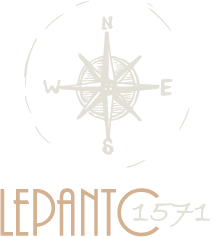
Greek Revolution and the modern Greek State
Naupaktos remained a stronghold of the Ottoman fleet and -at times- of the collaborating corsairs for the entire Late Ottoman period. An orchestrated participation of the Orthodox Christian inhabitants of the city to the Greek War of Independence would therefore have been immediately crushed. The inhabitants of Naupaktos who wanted to revolt took refuge to the mountainous areas or went even farther. However, an important event of the Greek War for Independence, albeit not widely known, took place in the beginning of June 1821 at the port of Naupaktos. In the beginning of April 1821 the revolutionists in the Peloponnese besieged Patras. Provisions for Patras were sent from the port of Naupaktos. Thus, a naval unit consisting of ships from Spetses and Hydra decided to cut off the dispatch of ammunition and foodstuff. On their way they met an Ottoman firkata and attacked it. The firkata signaled the rest of the Ottoman ships in the Gulf of Patras and the latter headed, all together, to Naupaktos for protection. As the attempt of the land forces of the revolutionaries to conquer the Antirrion fortress had failed, the small fleet of Greek ships decided to follow the example set by Papanicoles at the naval battle of Eressos, and to attempt to set on fire the Ottoman fleet within the port of Naupaktos. A 23-year old mariner from Paxoi, Yorgos Anemogiannis, volunteered for this difficult task. He set aboard a vessel filled with gunpowder and logs; although he did not have prior experience he persecuted the Ottoman ships and tried to enter the port of Naupaktos and collate his boat to the Ottoman firkata. However, he was arrested by the Turks and Anemoyiannis was tortured to death on the deck of the firkata. In order to honour his brave act a bronze statue of Anemoyiannis stands now on the western jetty of the port.
Following this event, the Ottoman presence at Naupaktos was strong throughout the Greek War for Independence and the region was the last one on Mainland Greece to be freed on the 18th of April 1829 with a treaty signed by the brother of Ioannis Capodistria, Augustinos, who remained in the area as governor. After the departure of the Turkish inhabitants of the city, families from Souli settled in, as their own territories were still under Ottoman occupation. This was a kind of reward for their important contribution as military leaders to the Greek War for Independence. Families such as those of Tzavellas and Botsaris found their new home here. The latter, under the leadership of Notis Botsaris, had played the most important role during the battles for the liberation of the region, after all. They were given the fortified building, which was the residence of the governor at various times, known thereafter as “Botsaris castle”. The Tzavellas family, on the other hand, led by Kitsos Tzavellas, also had a prominent role during the final battle for the liberation of Naupaktos and remained as members of the city elite henceforth. Their house, a two-storeyd mansion, is situated at the Vezyr Cami area within the fortress and nowadays is restored and hosts the 22nd Ephorate of Byzantine Antiquities.
